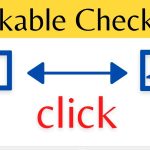As someone who works in the credit union industry, I know how important it is to get more people engaging with your content and services. Driving organic traffic isn’t just about vanity metrics – it helps you connect with more potential members and serve your community better. But getting more visitors through search engines and social media can seem confusing, right? Where do you even start with SEO for credit unions and should you even bother optimizing at all as a small financial brand?
I’ve worked on digital marketing campaigns for credit unions of all sizes, so I want to share my best tips on how you can drive more organic traffic too. This stuff isn’t nearly as complicated as some “experts” make it sound!
Let’s get into it…
Focus on Creating Content People Actually Want
I know this SEO for credit unions stuff can feel technical at times with all the talk of backlinks, keywords, and site speed.
But here’s the key thing to remember – none of those details matter if you aren’t publishing content that serves your audience!
SEO isn’t about gaming the system to rank higher. It’s about understanding consumer search trends and providing valuable information to those people.

So where do you even start identifying keywords and topics to optimize around? Here are 3 tips:
Research Questions People Ask on Search
Start by digging into the specific questions people type into Google around bank accounts, loans, credit cards, mortgages, retirement plans, etc.
You can use Google’s keyword planner or look directly at “people also ask” sections under related searches. This shows real questions that real people want answers around.
Once you identify those topics, create dedicated pages, blog posts or even videos optimized to answer those specific questions.
For example, if people in your city are searching “should I get a HELOC or home equity loan?” an in-depth comparison guide would serve that audience perfectly while also ranking well in local search.
Look at Trending Industry Insights
Keep up with latest trends and insights in the personal finance space more broadly. Look at what topics industry experts and leading financial websites are discussing.
Then take those ideas and localize them for your credit union and community specifically. Share your unique, on-the-ground perspective to distinguish your content.
Some evergreen topics I always see performing well include guides on building credit/improving credit scores, first time home buyer tips, high yield savings advice and debt payoff strategies like debt avalanche vs debt snowball.
Ask Members Directly What Content They Want
And don’t forget the good old fashioned approach of simply surveying your customers directly!
Send out email campaigns or in-branch surveys asking what types of money advice articles or video explainers they want to see. This gives you direct insight into content topics they find valuable.
It also helps strengthen brand loyalty as members appreciate you taking their input and catering education just for them.
Optimize Your Site Navigation For SEO
Now that you know what kind of content to create…
You need to make sure your credit union website is structured correctly so that content is easily indexed and served up to the right searchers.
Here’s how to optimize website navigation for better crawling + SEO:
Use a Simple Information Architecture
Keep your site’s information architecture clean, flat and easy to navigate rather than burying critical pages under layers of nested categories and mega menus.
This allows more pages to be accessible from the main homepage and overall simplifies the structure to make life easier for search engines crawling your content.
As you organize sections of your site relevant to loans, bank accounts, rates, etc. – try not to have pages buried more than 3 clicks deep from your homepage.
Make Keywords Part of URL Structure
When possible, incorporate target keywords you want a specific page or content asset to rank for into its URL structure.
For example, instead of having a generic slug like:
yourcu.com/blog/5-credit-myths
Include core keywords:
yourcu.com/blog/improve-credit-score-5-myths
This helps further define relevancy signals for search engines to understand what each page focuses on.
Interlink Relevant Content
Once you have pages targeting various credit union-related keywords and topics, make sure to interlink those assets together using relative links.
This allows visitors to easily discover other relevant content you’ve published to serve their interests.
It also strengthens the topical relevancy signals passed between those pages. If your guide on “becoming a first-time homebuyer” links out to your “what credit score is needed to buy a house” article, it shows greater credibility around the mortgage-focused advice you offer searchers.
The easier you make it for visitors to navigate and consume related content across your site, the longer they’ll engage…leading to positive SEO for credit union outcomes.
Earn Backlinks From Local Sites
Now for a crucial part of increasing organic visibility – backlinks.
Getting other reputable sites across the web to link back to your credit union website helps search engines see your content as trustworthy.
The key here is that not all links are created equal though. Random directories or bad neighbor links don’t pass much SEO value.
You want to focus on earning backlinks from quality sites with authority in your niche and location. Here’s where to start:
Claim Locally-Optimized Business Listings
Create properly optimized profiles for your credit union branch locations across key sites including Google My Business, Apple Maps and Bing Places For Business.
Fill out as much info as you can including branch hours, contact info, photos and attributes like parking availability or drive-thru access.
This helps local consumers who search things like “best credit union near me” easily find and choose your branches.
In turn, it brings in hyperlocal link equity and ads associativity between your website and real-world locations.
Double check all the details shown on third-party directories like Yellow Pages and Yelp as well. Doing so improves local SEO while giving you more control over your brand’s presence.
Partner With Community Organizations
Find ways to get involved with local business associations, chambers of commerce and community groups like Rotary Club or Lions Club.
Sponsoring events, speaking on financial literacy or hosting workshops positions your credit union as an expert resource beyond just banking.
And often these public-facing initiatives lead to shoutouts, backlinks and heightened awareness from domains with high regional authority.
Pitch Local Publication Partnerships
Don’t be afraid to pitch exclusive partnerships with local newspapers, city guides, radio shows and community magazines relevant to your membership area.
Offer to co-create content like weekly money tips columns that feature branded guest posts from your Chief Investment Officer or Head Teller linking back.
Leveraging these trusted media relationships amplifies your community banking authority exponentially more than basic directory citations.
Optimize Site Speed & Technical SEO
Now this part may make your eyes glaze over, but stick with me! Getting technical SEO essentials handled improves how easily search engines crawl, index and understand your website content at scale.
Leverage AMP + Mobile Responsiveness
With the majority of searches happening on smartphones, a mobile-friendly responsive website is 100% necessary not just for usability but also visibility.
Google specifically prioritizes fast-loading pages optimized for mobile indexing. This means optimizing elements like tap targets, page speed, structured data and Accelerated Mobile Pages (AMP).
Resolve Indexation Errors
Search engine indexing issues like duplicate page titles, meta descriptions or content can fracture the strength of signals passed to each URL and topic you want to target.
Using tools like Google Search Console allows you to identify and resolve problems like crawling errors, 4xx status codes or indexing blocks on key pages.
Having clean technical SEO helps consolidate ranking potential rather than diluting it.
Update Site Architecture Best Practices
Modernizing your website’s underlying framework, plugins and hosting stack provides a foundation for good technical SEO.
Migrating to WordPress 5.0+ or switching to Sitecore, Adobe Experience Manager or other digital experience platform allows leveraging latest best practices.
Elements like XML sitemaps, optimized metadata tags, faster LCP/TTFB page speed, structured data markup and resource compression all stem from having an optimized technology architecture.
Expand Your Audience Targeting
SEO isn’t just about ranking #1 in general search results. It’s about connecting with consumers who demonstrate intent – like searching “credit union opening bonus” hoping to switch to a new institution for a signup incentive.
Optimizing to reach those high-converting audiences is crucial. Here are 2 tactics to go narrower with SEM:
Optimize For Hyperlocal Service Searches
Going beyond just broad terms like “bank near me”, target more precise geo-intent keywords including:
“credit union on oak street” “atm on 5th avenue” “shared branching locations near me”
These ultra specific searches indicate someone ready to visit a location right now. So earning visibility for those phrases brings consumers fully down the purchase funnel.
Create Ad Groups For Specialized Financial Products
Similarly, bid on search keywords tied directly to specific financial products like:
“used auto loans rates capital one credit union” “best credit card transfer balance offer credit union” “refinance student loans nurse credit union”
This allows you to attract visitors already actively comparing competitive rates and deals – making them primed to convert.

Track What Works (And Doesn’t)
Whew, that was quite an info dump on driving more organic traffic right?
Let’s wrap things up with the most important principle for consistent SEO success…
Always be testing and analyzing the data!
The search landscape evolves so rapidly. The tactics working today likely won’t keep you top of the SERPs forever.
Here’s how to continually assess effectiveness:
Document Website Traffic Changes
Keep historical records on organic traffic trends segmented by source, page and keyword.
Use platforms like Google Analytics, Searchmetrics or Ahrefs to snapshot monthly visits over time.
Saving quarterly PDF exports allows you to pinpoint when/where changes occur as Google’s algorithms shift.
Identifying new opportunities and underperforming areas gets much easier.
Learn From Top-Ranking Competitors
What SEO and content strategies are your biggest competing credit unions leveraging that you may be missing?
Use incognito browsing sessions to analyze why their articles and pages consistently win certain high-value keywords.
Reverse engineer what’s working then apply similar data-driven opportunities tailored to your business.
Continually Experiment With New Approaches
Never get complacent just because your organic traffic is steady now. You have to keep testing promising tactics like social media integration, long-form pillar content, interactive tools and more.
Try creating 5 new link-worthy assets per quarter based on the latest SEO innovations and measure impact over a 6 month period.
Evaluate new channel performance before doubling down. But don’t leave any stones unturned when it comes to surfacing content for your audience!
And that’s a wrap! I know that was an absolute ton of SEO for credit unions information and advice all thrown at you at once. Please let me know if you have any other specific questions on the best ways to drive organic growth.
I’m always happy to offer 1-on-1 digital marketing strategy help for credit unions looking to expand their web presence. Reach out anytime!
FAQs
What are the most important SEO factors for a credit union website?
The core elements credit unions should focus on optimizing first are overall site speed, technical foundations like SSL and site architecture, publishing genuinely helpful content tailored to member questions, building locally-relevant third-party citations + partnerships, and tracking traffic over time to identify new opportunities. Mastering the essentials provides a scalable foundation for driving sustainable organics growth long-term.
How competitive is SEO in the banking and finance space?
SEO difficulty in the crowded financial services arena is quite high. Major national banks with huge budgets can dominate the landscape for broad commercial terms like “free checking” or “auto loan rates”. But credit unions have opportunities to go hyperlocal by targeting community-focused long-tail keywords bigger brands won’t care about. Ex: [City Name] credit union mortgage rates. These precise geo-intents allow smaller players to still carve out search visibility through relevance.
Is SEO management easy enough for small credit union teams to handle in-house?
Definitely! With the rise of user-friendly, all-in-one SEO platforms, technical knowledge isn’t essential. Solutions like BrightLocal, Moz and Semrush make running SEO audits, tracking keyword ranks, identifying issues slowing site crawlability and documenting progress simple enough for non-experts. You don’t necessarily need an outside agency (though consultants can fast track strategy). With proven game plans tailored to credit unions and cooperative workflows across marketing + IT teams, driving organic growth internally is totally feasible.
How long does it take to see positive SEO and traffic results?
Patience is key with organic SEO. Unlike paid ads bringing instant gratification, rankings depend on many evolving algorithmic factors. It takes time to earn trust signals like link equity, engagement duration per visit and expertise associations. Often it takes 6 to 12+ months before significant changes in organic visibility based on efforts made early on. But earned SEO success compounds over time, making it a worthwhile long-term channel compared to constantly advertising. Commit for the long haul to realize sustainable lifts.
Where should credit unions focus SEO budget – content creation or technical site migration?
Ideally SEO investment gets split across both foundational technical improvements and continuous content production based on consumer search intent trends. Because Google’s algorithm interprets signals from the whole website collectively, flaws on one page or infrastructure gap can hinder visibility site-wide. The baseline + content need equal love. We generally recommend devote 30-40% into one-time technical/design needs then 60-70% into recurring writer resources. Balance enables driving visibility while also efficiently converting that new traffic.
In Summary
There you have it! A complete overview on how to drive more organic search and social traffic to credit union websites leveraging relevant keyword targeting, geo-focused content production, link building and technical/on-page optimization best practices.
I know that was a whole lot of tactical advice all thrown at you. Please feel free to reach back out if you want to dig deeper into any specific SEO for credit unions for your financial institution.
Navigating the intricacies of On-Page SEO for insurance agents: A step-by-step guide may initially seem overwhelming; however, by honing in on your distinctive value proposition for members as a community bank and optimizing content accordingly, you can sidestep the early complexities, steering clear of getting lost in the weeds with micro conversion tracking and similar details.
Lay the SEO groundwork on website speed, site architecture, local listings and partnerships first. Identify initial member-focused content topics to organic engage and assist based on searches.
Once you build initial visibility and traffic, you can refine further. But keep polishing that presence through continuous locally-relevant social content, optimized journalism, events and education opportunities.







